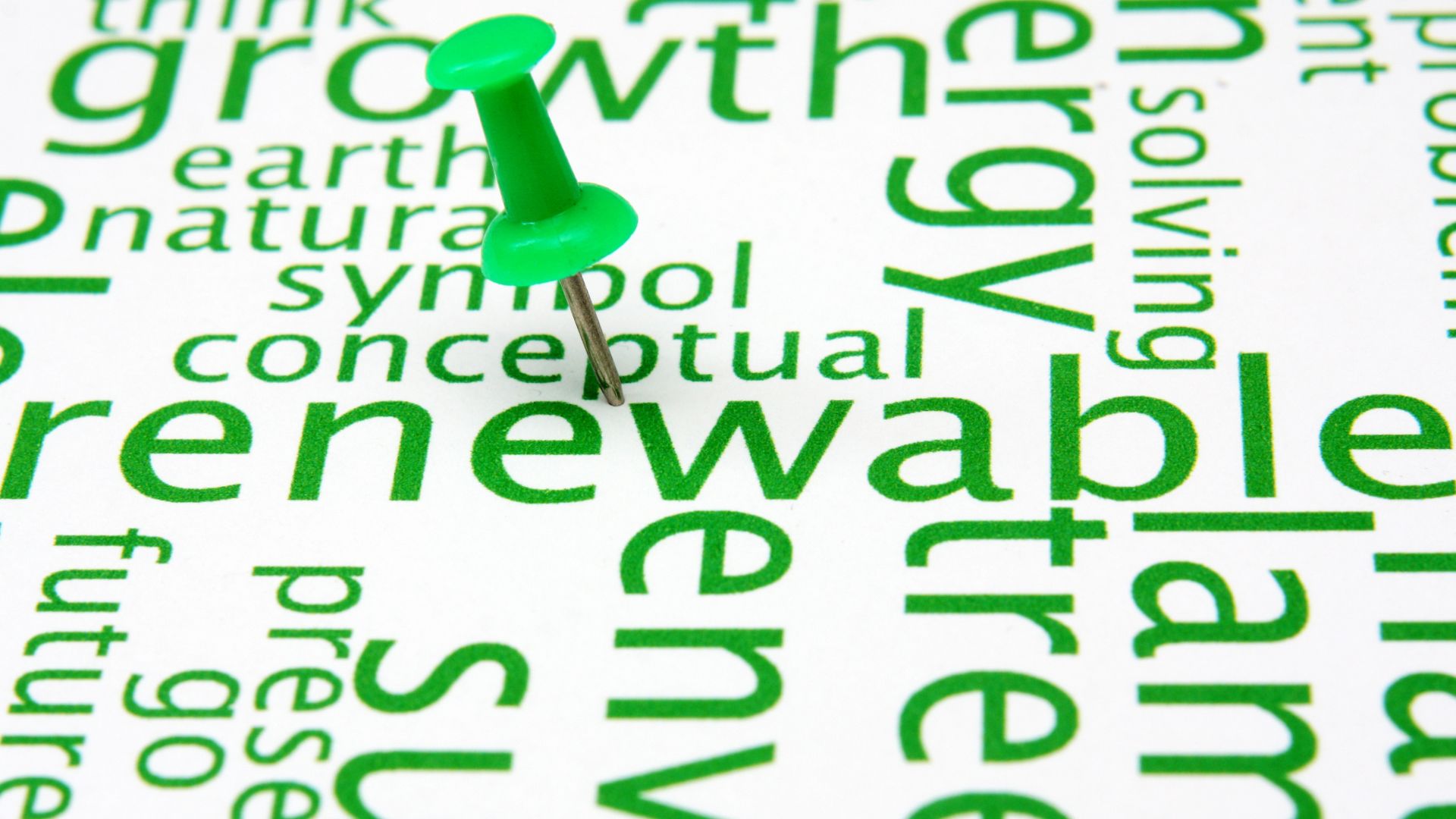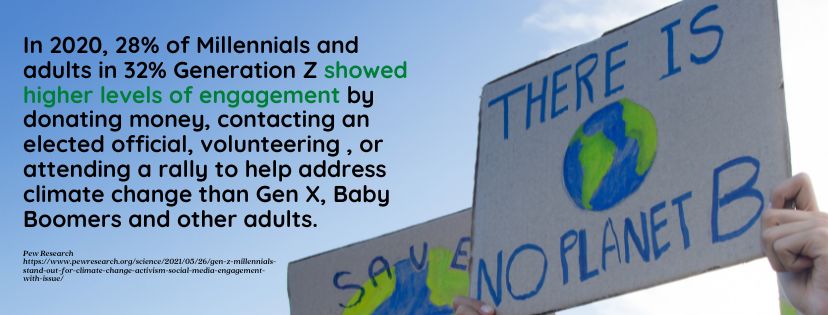Find Your Perfect School
The colleges and universities making renewable energy adoption possible on a large scale are leading the way in mitigating climate change and ensuring the future of the planet. The combination of increased affordability of renewable energy technologies and increased energy efficiency gives hope that a 100 percent renewable energy system is a possibility by 2050!
The latest Environment America research presents five schools for renewable energy in five categories – renewable electricity overall; renewable electricity generated on campus; renewable electricity sourced from off-campus sources; heating, cooling, hot water, and other non-electric energy produced; and the highest percentage of campus-owned electric transport.
Environment America’s research policy uses the full-time equivalent (FTE) student measurement. Environment America works with 50+ colleges and universities across 15 states for renewable energy transition and supports organizations committed to social change via renewable energy. Numerous schools have adopted its clean energy initiatives, too, through inspiration from its member institutions.
Sum it up! How Colleges Benefit from Renewable Energy
College campuses benefit in numerous ways when energy efficiency becomes embedded in their systems! With accelerated but well-planned energy efficiency improvements, these institutions can reduce their energy consumption resulting in higher monetary savings and a lower carbon footprint. Many institutions have also developed and implemented their own energy conservation programs that combine smart technology and community initiatives.
Beyond renewable energy projects, colleges and universities also benefit from changes in energy consumption behaviors including the creation of cultures of conservation. These changes become a lifestyle and, thus, can be translated into off-campus behaviors.
How Colleges Are Poised for Leadership in Renewable Energy
Colleges and universities are the ideal places for the renewable energy revolution because these are hubs of research, innovation, and restlessness about the status quo. Their role in the transition from fossil fuel-powered systems to 100 percent renewable energy systems involves multiple aspects, too, from technological innovation to consumer education.
Large multi-campus universities, small liberal arts colleges, and community colleges alike are also entering into partnerships while deploying renewable energy technologies, reducing energy consumption, and switching their campus fleets to electric vehicles.
Allegheny College is a prime example of a small liberal arts college that has reduced energy use in its buildings through more efficient lighting and heat recovery systems. The nation’s leading campuses for green energy generate 100% of their electricity from renewable energy sources, many even generating excess energy.
Colleges and universities are also frontrunners in the renewable energy transition because these are also large energy users! By deploying renewable energy technologies and promoting renewable energy data, these institutions are also attracting innovative students and researchers.
Many colleges and universities have also made ambitious renewable energy commitments. Harvard University has reduced energy consumption through awareness initiatives to encourage energy conservation habits and efficiency upgrades.
The University of Hawai’i has pledged to generate as much renewable energy as needed and its Maui campus installed on-campus renewable energy sources in 2019. The University of California system has also adopted ambitious renewable energy commitments, particularly being carbon neutral by 2025.
Colleges and Universities Adopting the Best Practices in Renewable Energy
Southwestern University
The America Research Policy Center ranked Southwestern University #1 for overall renewable electricity use in its colleges for renewable energy ranking. The university buys renewable energy credits from wind farms equal to 100% of its total electricity needs, via a contract with the City of Georgetown.
This is a landmark agreement since Southwestern was the first university in Texas to purchase renewable energy credits for reducing energy consumption and moving toward more renewable energy use. Southwestern has also produced on-campus renewable energy through solar panels and solar water heaters.
University of Minnesota – Morris
Environment America research puts UMN Morris at the top spot for the highest on-campus renewable electricity generated, a radical change from its former reliance on fossil fuel-powered systems. The holistic campus renewable energy program is designed for carbon neutrality through diverse renewable energy technologies.
Among its easily visible on-campus renewable energy sources are the two wind turbines with their excess renewable electricity generated by a local power provider. The biomass gasification facility is also among its campus renewable energy sources since it addresses a large chunk of the university’s heating, cooling, hot water, and other needs. UMN also has multiple solar arrays in various buildings and plans on adding more to boost its campus’s renewable energy production.
Other renewable systems leading campuses mentioned in the Environment America research are the University of Missouri, Carleton College, and Skidmore College.
George Washington University
GWU is #1 on the top colleges for renewable electricity purchased from off-campus sources, meaning it bought more renewable electricity for every full-time student. The university doesn’t have the resources or the space for the production of renewable energy on its campus but purchases it from third-party providers.
GWU has a renewable energy deal with Duke Energy Renewables in the construction of three off-campus solar arrays, and the renewable energy generated will provide 53% of the university’s electric needs. Solar power will not only power GWU but also GWU Hospital and American University.
Among the top five schools for renewable energy of electricity purchased from off-campus sources are American University, Luther College, University of California, San Diego, and Skidmore College.
Colgate University
Yet another prestigious university with on-campus renewable energy facilities is Colgate University, ranked #1 in the Heating, Cooling, Hot Water, and other Non-Electric Energy Produced category. Colgate is transitioning from traditional fossil fuel-powered systems into renewable energy sources including geothermal heat pumps and solar thermal panels.
Non-electrical energy needs refer to building heating and hot water requirements with multiple renewable energy systems addressing these needs year-round. These campus renewable energy sources led to Colgate being the first university in New York to reach carbon neutrality. Energy efficiency is also prioritized, as evidenced by the use of more efficient insulation, carbon-neutral biomass, and ice-making processes.
Ringling College of Art and Design
Leading the charge of institutions switching their campus fleets to electric vehicles is Ringling College of Art and Design, a transition that reduces the presence of fossil fuel-powered vehicles on campus. The school has consistently been ranked in Colleges for Renewable Energy rankings for several years, too, including getting their electricity from renewable energy sources.
Leading schools are switching from fossil fuel-powered vehicles to electricity-powered vehicles, too. Examples include Columbia University and Albright College, which are also installing charging stations.
Georgetown University
Georgetown’s committed stand on energy efficiency and conservation includes building energy audits for existing buildings and LEED-Silver certification for new construction. Even building retrofits are made with energy efficiency in electric consumption and other building energy needs in mind. Also, there are student-run $1.5 million funds for energy efficiency projects, such as LED lighting retrofits in parking lots and the dining hall.
Renewable energy credits are also used since Georgetown doesn’t have the space and flexibility for large-scale renewable electricity production on its campus. But through purchases of off-campus renewable energy, installation of small-scale projects, and aggressive reduction of electricity consumption, it’s at the forefront of renewable energy. Georgetown purchases renewable energy credits more than its electricity requirements, too.
Georgetown was recognized with the 2013 Green Power Partner of the Year. The Green Power Leadership Awards are run by the EPA for organizations with exceptional achievements in renewable energy.
University of California
The UC system is among the top colleges for renewable energy production with a commitment to carbon neutrality by 2025. Among its campus sustainability, initiatives include the use of renewable energy for space and water heating requirements in major building renovations and new building construction.
Vanderbilt University
In 2019, Vanderbilt made a commitment to achieve carbon neutrality and fully transition to renewable energy for its entire on-campus needs by 2050. The university plans on making substantial investments in both off-site and campus renewable energy sources, using electric-powered vehicles, and expanding its green spaces. The campus has solar thermal panels for electricity and non-electrical energy requirements, solar-powered picnic tables, phone charging stations, and a dockless bike share program.
Butte College
Community colleges like Butte College are also leading the charge in renewable energy, and it’s the first college campus in the US to attain grid-positive status! This means that Butte generated more electricity than its current consumption, in 2011, numbered 25,000 solar panels. Nowadays, its rooftop solar panels not only supply three-fourths of its electricity needs but also become a training ground for students.
Arizona State University
ASU’s energy consumption was so high that it was Arizona’s largest energy consumer! But it has since transitioned into multiple renewable energy sources including having the highest solar energy production among colleges across the nation. Its Solarization Initiative includes solar panels and heating systems at four campuses and its research park.
Solar Energy Production and Use Among Colleges
Such is the abundance of solar power generated by installations across the country that it can generate renewable energy more than 100 times more than its current electricity needs! With institutions of higher education also producing renewable electricity for their own consumption, solar energy is considered instrumental in our society’s renewable energy transition. These institutions are installing solar arrays on rooftops, parking lots, and other open spaces more than any other renewable energy technology.
The renewable energy generated by solar arrays has numerous benefits for higher education institutions, too. Cost-savings due to the decrease in installation prices of solar arrays and the affordability of solar energy in comparison with fossil fuels. Many institutions also have the space and flexibility to introduce solar arrays in their existing infrastructure and in future buildings.
Students benefit from the intensive training that solar installations and their maintenance providers can supply leading to viable careers in the renewable energy industry. The pre-professional training opportunities are diverse, too, from design to installation and management.
Universities benefit from the innovations that their research and development professionals produce, such as in solar energy storage, solar design technology, and solar efficiency. Researchers at Penn State, for example, use affordable optics in concentrated solar energy generation to produce next-gen solar cells.
Flexibility in the diverse use of solar energy is made possible via efficient energy storage systems, too. At UC Riverside, excess solar energy produced can be stored and later used for charging electricity-powered vehicles.
Solar heating, cooling and hot water systems are also popular among colleges because these not only reduce energy consumption but also provide learning opportunities for students. With huge amounts of hot water used in dining facilities, residence halls, and athletic facilities, every kilowatt-hour matters!
No wonder prestigious universities have extensive solar arrays on and off their campuses! Princeton University, Northwestern University, and Colorado State University are a few examples.
Wind and Geothermal Energy Generation Among Colleges
Wind power is becoming a popular method of generating electricity from renewable resources with large universities and community colleges alike installing wind turbines in their campuses. In 2016 alone, these institutions of higher learning decreased their greenhouse gas emissions equivalent to more than 33 million cars being taken off the road! Many are also partnering with local energy providers for their wind energy-related needs, such as the University of Arizona, while others have on-campus facilities like SUNY Potsdam.
Many large colleges are also in the best position to install small wind turbines on their rooftops and/or full-scale wind systems on open fields. Onshore wind energy generation is also more affordable since the technology was introduced – a price drop of nearly 90% since the 1980s. With tax incentives, these can also be more affordable than coal-powered systems.
Students also enjoy vocational training for future careers in renewable energy, and many colleges with associate and bachelor’s degree programs in wind energy have on-site installations, too. There are fewer expenses for travel and other incidental costs, thus, attracting more students to these academic programs. With robust job growth, the more students engaged in renewable energy education, the better for the industry and society!
Researchers also benefit from the presence of on-campus wind turbines since there’s an increased likelihood of research grants and facilities. The University of Delaware, the University of Massachusetts at Amherst, and the University of Wyoming are among the best in conducting research and producing renewable electricity from wind power.
Geothermal energy production systems rely on the earth’s stable temperature to make it work. Ground source heat pumps and other geothermal technologies address heating and cooling needs and store thermal energy for future use. Geothermal-generated electricity comes from either hot water reservoirs or steam fields underground. University of Notre Dame, Oberlin College & Conservatory, and Carleton College are a few examples of universities going underground for their renewable energy needs.
Green Transportation In College Campuses
Aside from renewable energy projects with physical infrastructure, universities are also reducing their greenhouse gas emissions by switching to electric vehicles, and this move is complemented by their renewable electricity production. Many universities are either adopting or expanding their renewable energy-powered charging stations, such as the University of Hawaii and the University of Texas. Many are also encouraging their community members to walk or ride a bike instead.
Colleges and universities are also reaping the benefits of going electric in their transport, particularly in their overall energy consumption. With less noise, heat and exhaust, the university community enjoys better air quality. With the prices of fossil fuels on the rise, electric vehicles make good financial sense, too. Students can work with faculty members and professional researchers on research projects that push electric vehicles into the affordable consumer market.
Frequently Asked Questions
What are the major ways that colleges use renewable energy and/or reduce their energy consumption?
With higher education’s energy lessons from past initiatives, colleges and universities will find it in their best interests to adopt a holistic approach where multiple renewable energy sources are maximized. Setting a goal toward 100% use of renewable energy, from electricity to other building energy needs and electric vehicles, is also a must.
Adopting diverse energy conservation initiatives, from education to campus renewable energy systems installation, is also recommended, as are making energy efficiency improvements in existing infrastructures.
Ground source heat pumps and solar hot water should be part of the daily vocabulary of the university’s community, too, since these are abundant resources for their other building energy systems. Even community colleges, such as Santa Fe Community College and Austin Community College, have on-campus renewable energy systems and minimize waste.
Why study renewable energy?
This isn’t a fad that will fade anytime soon! The need to reduce energy consumption is just as important in the home as it is in society, and it’s a way of life, too. By reducing energy consumption, you’re not just saving money but you also become part of the solution to reduced consumption through energy efficiency and a successful transition to 100 percent renewable energy.
Every industry and organization is also looking for ways to reduce consumption through energy efficiency methods, perhaps even to adopt a 100% renewable energy system that will eliminate their electricity bills. E-commerce brands are becoming more conscious about recycling and other energy-friendly branding, too. The bottom line: New career opportunities await! There are plenty of on-campus renewable energy degree programs, too, which will become your stepping stone toward these career opportunities.
What major is best for renewable energy?
There’s no one-size-fits-all answer since the best degree is the one that fits your personal and professional goals! However, we suggest looking into associate and bachelor’s degrees in environmental engineering, wind turbine technology, and solar energy generation.
What are the possible career paths with a degree in renewable energy?
The Bureau of Labor Statistics predicts good employment growth for jobs in the renewable energy sector, particularly in solar and wind generation occupations. These include jobs in engineering, academics, environmental consultancy, and IT and communication, meaning the jobs span the range of blue-collar to white-collar jobs depending on the degree and work experience.
What are the challenges of renewable energy?
While numerous schools have adopted ambitious renewable energy programs, there are challenges, too, in the shift to 100 percent renewable energy. Renewable energy resources are beyond the control of humans and, thus, there will be issues about the availability of power. Renewable energy technologies must take into account nature’s unpredictability, too.
Electricity from renewable sources is also affected by issues related to its quality with poor-quality electricity resulting in equipment failure and other adverse effects. These issues include low power factor, frequency disorder, and variation in voltage. Other issues associated with electricity from renewable sources are their geographical location, information barrier, and costs.
Key Takeaways
- Colleges and universities are at the forefront of the renewable energy revolution by being hubs of education, invention and innovation in solar, wind and geothermal energy production.
- The renewable energy industry offers plenty of rewarding career opportunities that can be accessed by gaining workplace-ready knowledge and skills via academic programs.











